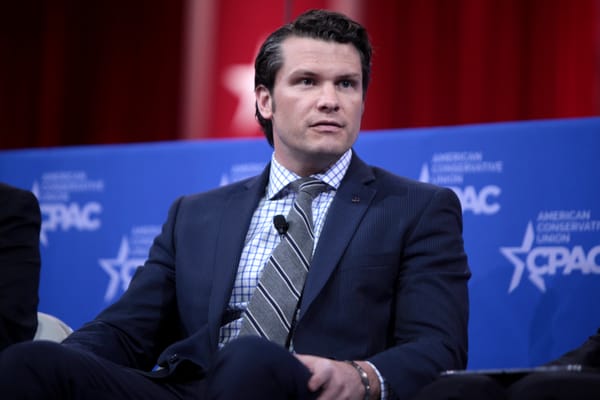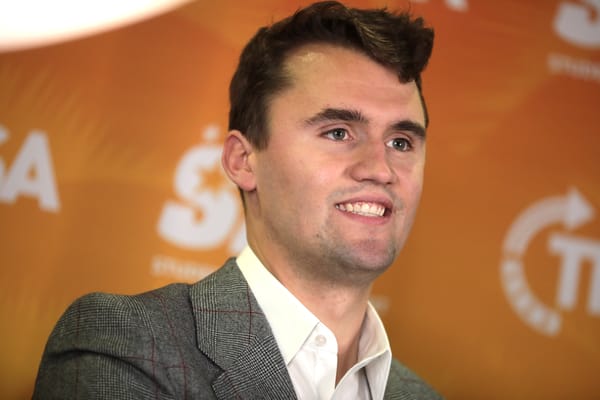College Accessibility Must Start Before College

The use of education to secure more egalitarian economic outcomes without outright redistribution has been a cherished goal of liberals in the United States for centuries. The public education ideal, first nationally codified in the Northwest Ordinance that set aside land for public schools in the Old Northwest, has carried on until today because the promise it holds out is so attractive. If every child has equal access to adequate schooling, this creed holds, we can say with conviction that we have provided “equality of opportunity.” Among the most powerful advocates of social democracy and education reform in the US history (and target of immense conservative vitriol), John Dewey, made the case this way:
It is not enough to see to it that education is not actively used as an instrument to make easier the exploitation of one class by another. School facilities must be secured of such amplitude and efficiency as will in fact and not simply in name discount the effects of economic inequalities, and secure to all the wards of the nation equality of equipment for their future careers.
Providing an “equality of equipment” for the future is a common but difficult goal. It is often confused with providing equal resources or education to each individual student, but that is insufficient for the task. The resources students can bring to their educational careers are so unequal that even a system of perfectly free and equally funded schools through the college level—and such a system is of course far from the reality—will continue to produce dramatically unequal educational results.
The animated debate between moderate and more radical Democrats about higher education—whether to push for tuition-free college, means tested programs, or some other policy—has brought these disparities to light and along with it another round of the national dialogue on education equity. The rising importance of a college degree to economic success, and the rising cost of securing such a degree, points to an obvious hole in this equal opportunity conception of our educational system. It is obvious even to those with little experience with either education or poverty that if only the wealthy can afford to attend college, students have not all received “equality of equipment for their future careers.”
However, the back and forth over the relative merits of different tuition plans has obscured an important point. Regardless of the tuition policy, it can only truly impact college accessibility for a segment of the population, that is, high school students who make it to senior year, are mostly prepared for college, and who have the necessary tools needed to enroll and succeed there. This group, while not by any means exclusively middle class, is disproportionately so. All major Democratic candidates have put forth plans to improve these secondary outcomes, and these plans, and other necessary policy changes, deserve a higher priority in the national discussion on education policy.
What the candidates have put forth
Every major Democratic candidate has proposed reforms to the tuition system for higher education, but their plans differ. Joe Biden has proposed making two years of college free in community and tribal colleges, with the federal government footing the majority of the bill, as well as doubling Pell grant amounts and increasing opportunities for income-based student loan repayment and outright forgiveness. Pete Buttigieg would offer tuition-free higher education for all students from families making under $100,000/year, and on a sliding scale for the next $50,000 in income. Finally, and most famously, Elizabeth Warren and Bernie Sanders would make four years of college tuition free for all students. Any of these changes would be welcome, but none would have as dramatic an impact on low income students as one might expect.
Many students, especially those from low income families, are never in a position to even apply to college—each year, over a half million students drop out of high school, and lower income students are nearly twice as likely as others to do so. Moreover, many students receiving high school diplomas lack both the formal requirements and the academic knowledge needed to succeed in college. Enrollment in remedial courses indicates that students of color and Pell Grant recipients are arriving to college, in many cases, less prepared than their middle class and white peers. While reducing or eliminating the tuition cost of college may improve some students’ motivation, and as a result their performance in high school, these numbers suggest that tuition-free college alone will strongly favor middle class students who are already expecting to attend college and have received an adequate high school education to quickly earn a two or four year degree.
By contrast, the students who are most in need of educational reform are those for whom college costs are only the last in a long string of hurdles. For many, college would have been free or very low cost already on the basis of means tested programs and scholarships; nonetheless, they are either stymied by their high school experience or attend college but fail to attain a degree because they were poorly prepared by their secondary and prior education. Strong educational programs are needed to reverse this throughout a student’s academic career if they are to make use of tuition-free college; otherwise, the benefits of increased college spending are going to accrue disproportionately in the middle and upper classes.
The first step to correcting this is ensuring the schools teaching lower income students have the resources they need. Frequently, state funding formulas mean that students in wealthy areas get more state funding due to mill levies and other local funding mechanisms. However, even if every school received the same funding—an important state goal—the opportunities for affluent districts would still be much greater. This is because wealthy districts can save money by pushing costs off onto parents who are eager or able to share the investment in their child’s education. Two parent households naturally have more time to help younger students with extra reading and math skills development; older students in wealthy districts will often be sent to private tutoring, a highly effective but expensive way of preparing them for more rigorous classes than they could tackle with just classroom instruction. Wealthy districts can also implement more fees for art, music, or other classes, saving them thousands in funding by tapping into a resource unavailable to poorer students.
This is the role of Title I education funding, but, averaging at just over $1200 per eligible child, this program is too underfunded to achieve the purpose of granting an equitable education to students in high poverty districts or facing special challenges. Joe Biden, Bernie Sanders, and Pete Buttigieg have all proposed tripling Title I funding, and Elizabeth Warren has proposed quadrupling it. These huge changes would make any additional college funding more progressive by giving students from lower income schools a better shot at graduating and being prepared to take advantage of tuition free college. These proposals are at least as important as any college tuition program currently being discussed; the fact that they’ve received less attention is unfortunate, and likely reflects the fact that media members, the most engaged media consumers, and primary voters are more likely to be college educated than the general public. If any of these candidates becomes president, it is important that activists, lobbyists, and legislators prioritize holding them to their Title I funding promises, rather than focus exclusively on college education.
Where candidates can go further
Making this money translate into actual results for students who are currently unlikely to attend college, however, may require more careful targeting—something which may not be achieved simply by granting more money to certain schools. Naturally, within local school districts, there is a political motivation to spend money on programs that can be sold as benefiting the majority of students, or at least the majority of students with vocal, voting parents. The problem is that the students in greatest need of assistance, for whom the state must go furthest to ensure adequate educational preparation, are often those whose parents have the fewest political resources at their disposal. A commitment by the president to specifically targeting students with the highest needs is required to start to give students equal preparation for college, without which any tuition program will fail to impact the students who need it most.
First, of course, students need to graduate from high school. There is plenty of evidence that targeted programs can achieve higher graduation rates, but the efficacy of different elements of those programs varies widely. The most impactful programs, according to large meta analyses of hundreds of studies, are those that include family engagement and behavioral interventions. These programs may need to be encouraged through specific grants and programs, as they are often the programs schools are most skeptical about introducing, seeing them as beyond the traditional scope of educational policy.
Similarly, efforts to encourage at risk students to attend college require specific efforts tailored to have that effect. The current federal efforts to improve college attendance by low income or first-generation students are the TRIO programs, a series of programs started in 1965 as part of the “war on poverty.” There is substantial evidence that the largest of these programs—Talent Search and Upward Bound—have been successful in increasing college attendance rates for their participants with the lowest initial educational expectations. In the case of Upward Bound, students’ rates of four-year college enrollment more than doubled, and the overall credits earned in college increased substantially. This impact is probably because Upward Bound requires students to meet with dedicated facilitators who are tasked with giving them much the same advice and support that other students receive from their parents. This includes both emotional encouragement and practical academic guidance that students with college educated parents often receive for free and take for granted. This is important not because parents in disadvantaged communities don’t value education—in my experience the ostensible fear of “acting white” is exaggerated by commentators looking for cultural explanations for academic performance gaps—but rather because the sort of advice and support a typical student needs to be successful in secondary and post-secondary education is generally gained through experience, and so even the most supportive parents often struggle to provide that assistance if they did not pursue higher education themselves.
However, these programs do not reach most eligible students. Upward Bound, the most intensive of the programs offered, is only even offered at about 3,000 of the country’s 24,000 high schools. The expansion of programs specifically targeting students who are less likely to graduate or less likely to enroll in postsecondary education is an absolute necessity for any college access agenda to be successful. None of the major plans proposed by Democratic presidential candidates makes any mention of specific programs aimed at dropout prevention or the TRIO programs, although the three with federal policy experience (Biden, Sanders, and Warren) have all been supportive of such programs in the past.
Campaign promises are notoriously difficult to deliver, but campaigning on a platform of specific interventions to help students with lower academic expectations would also push that national conversation in a salutary direction—putting more focus on evidence-based dropout prevention and higher education-promoting programs. Providing equitable educational preparation for all students, regardless of background, is one of the oldest goals of American liberalism; forceful efforts to achieve it now could pay dividends for decades to come.
Featured image is The Severe Teacher, by Jan Steen




